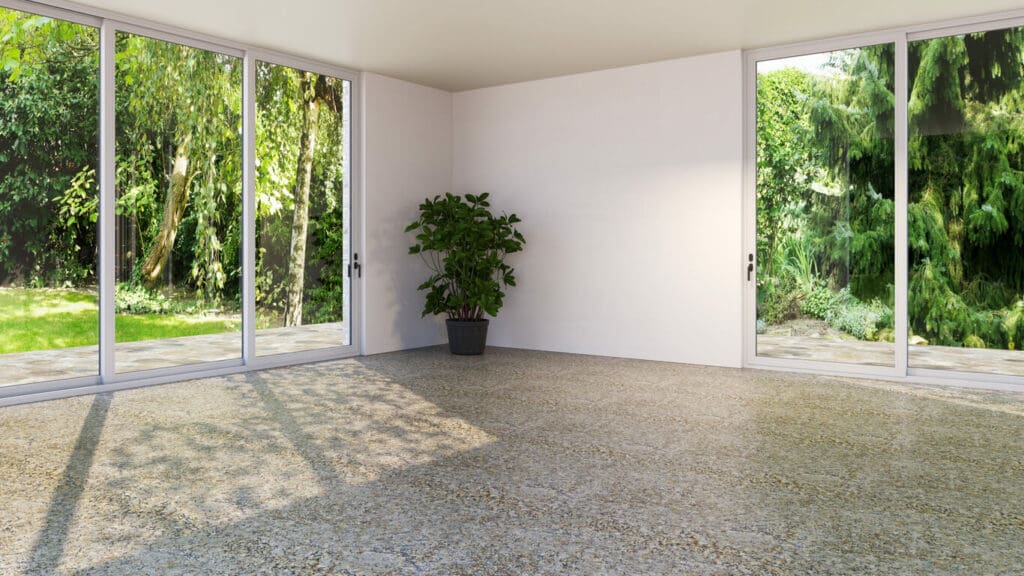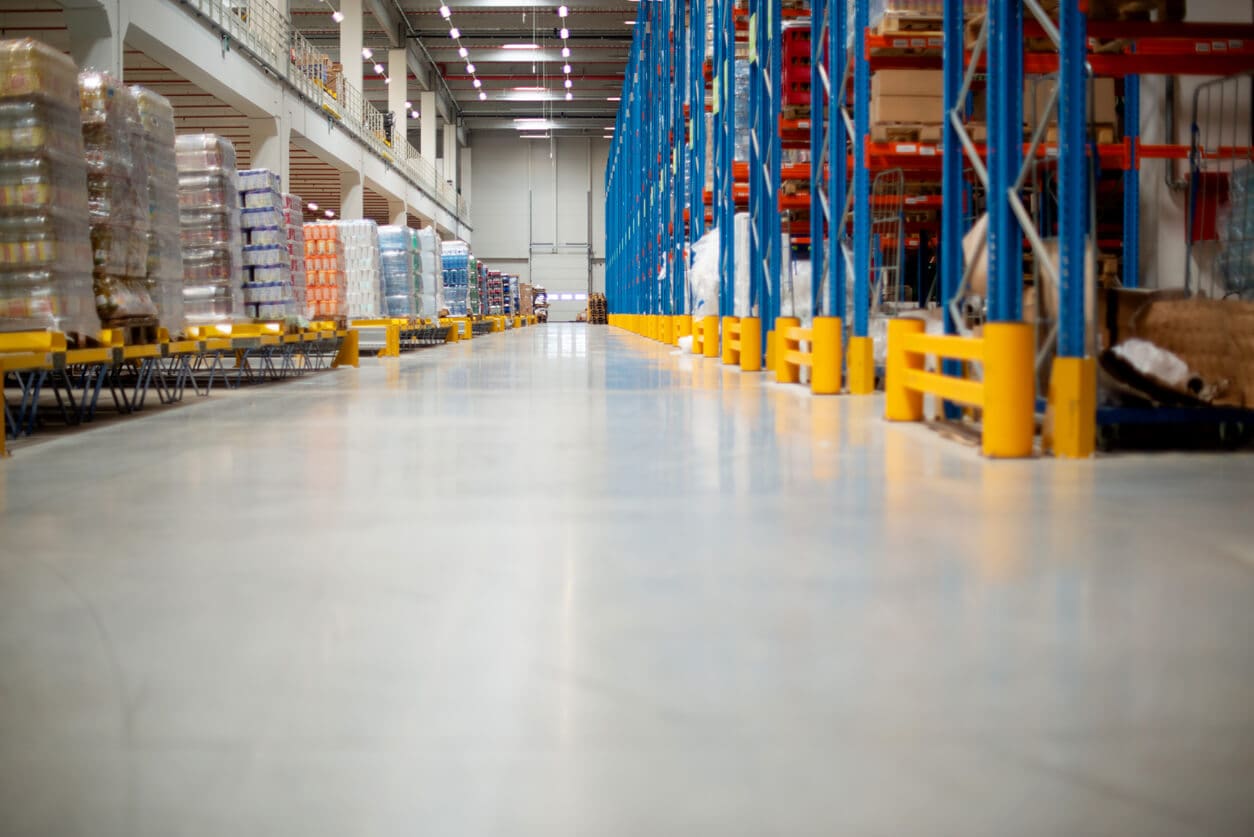
Why Commercial Resin Bound Flooring is the Top Choice for Modern Workspaces
News
Modern workspaces demand more from their flooring than ever before. From aesthetics and safety to...
Read More
Warehouse flooring is a fundamental yet often underestimated part of modern logistics infrastructure. As fulfilment demands grow and automation becomes the norm, businesses need flooring that can handle constant pressure without compromising safety, speed, or compliance. This guide explains how the right warehouse flooring system supports operational continuity, cost efficiency, and long-term performance.
Warehouses today are active, 24/7 logistics centres housing everything from robotics and automation to high-volume racking systems and heavy-duty vehicles. This environment demands flooring that withstands weight, resists wear and avoids downtime.
If your flooring underperforms, it can quickly lead to:
Getting it right from the start supports uninterrupted logistics flow.
Modern warehouse flooring must meet practical, high-demand criteria:
Together, these features improve workplace safety and operational reliability.
Here are the main options logistics professionals typically consider:
For food-grade facilities or regulated sectors, polyurethane screed systems are often preferred.
One example comes from Flex’s project for a food and drink manufacturer. The client needed a floor that could tolerate heavy use and remain hygienic. Flexflooring installed a resin solution that delivered both chemical resistance and seamless coverage
The flooring helped maintain hygiene, resisted frequent deep cleans, and extended the service life of the surface meeting both compliance and durability goals.
Need advice on hygienic flooring for food-grade warehouses? Speak to our team at 01622 747909 or via sales@flexflooring.co.uk about resin systems designed for demanding industrial environments.
Flooring choices directly affect design flexibility. Smooth, level floors allow for tighter racking, safer forklift travel, and the use of automation. Anti-static coatings protect electronic systems. Slip-resistant surfaces improve safety at critical points like docks and fridges.
Many logistics planners now align flooring specs with layout needs early in design.
High-performance flooring helps maintain uptime, reduces maintenance costs, and even lowers insurance premiums by reducing accidents.
A well-chosen floor system minimises long-term cost through:
It pays for itself in avoided disruptions and better performance.
Beyond the obvious performance criteria, factor in:
These small details influence employee comfort and daily productivity.
Sites in extreme climates need materials that hold up to expansion, moisture, or salt. Resin and polyurethane screed typically outperform concrete where thermal shifts or damp conditions are an issue.
Matching your floor to local demands helps prevent long-term damage.
Poor flooring often results in regular repairs and downtime. That leads to higher costs and lower productivity. Systems like polished concrete and resin minimise this by resisting wear and simplifying cleaning.
One fulfilment centre that installed resin avoided cracking, moisture issues, and extensive shutdowns saving money and staff time over several years.
Facilities aiming for high output should plan flooring with lifecycle cost in mind, not just installation fees.
Yes. Low-VOC coatings, local sourcing, and recyclable materials all contribute to a lower carbon footprint. ESG-conscious companies should view flooring as part of their sustainability strategy.
It also supports transparent reporting, making you a better partner for brands and retailers.
Use this checklist before you specify your next floor:
Clear answers here lead to better, longer-lasting results.
A smooth, durable surface supports the speed and safety of logistics:
Flooring that performs well contributes to uptime and safety targets.
Industrial-grade flooring is a long-term investment in uptime, safety, and efficiency. If your current floor is holding back your logistics performance, now is the time to act.
Speak to our team at 01622 747909 or via sales@flexflooring.co.uk to explore flooring solutions tailored to your site, sector, and long-term goals. We’ll help you get it right the first time.
Epoxy and polyurethane are common, but your best option depends on foot traffic, temperature, and load requirements.
Yes. It’s impact-resistant, chemical-tolerant, and easy to clean.
Typically, 10-20 years if maintained properly.
Epoxy coatings are the best mix of cost and durability.
Absolutely. Anti-slip finishes and marked lanes prevent accidents.
Yes. Low-VOC, recyclable systems support sustainability targets.
Talk to our team about solutions that support logistics goals, sustainability, and performance for years.
Lorem ipsum dolor sit amet, consectetur adipiscing elit.

News
Modern workspaces demand more from their flooring than ever before. From aesthetics and safety to...
Read More